Unfortunately, the box tree does not only suffer from the box tree moth. Here you can find out everything you need to know about combating possible diseases in your boxwood.
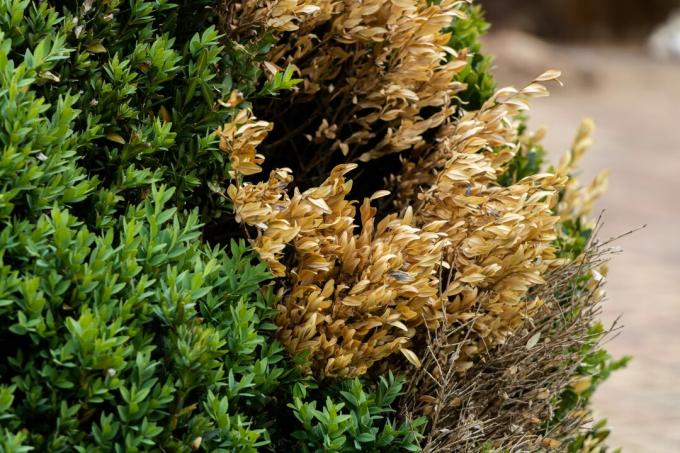
Of the Boxwood (Buxus) can be found in almost every garden and park and is repeatedly threatened by a wide variety of pests. As a result, its wonderful leaves are often discolored and the ornamental value also drops drastically. We have summarized everything you need to know about the various diseases.
contents
-
Boxwood shoots die or boxwood leaf fall
- Causes and symptoms of boxwood shoot dieback
- Combat boxwood dieback
-
Boxwood crab
- Causes and Symptoms of Boxwood Cancer
- Fight boxwood cancer
-
Boxwood rust
- Causes and symptoms of boxwood rust
- Fight boxwood rust
-
Phytophthora rot on the box
- Causes and symptoms of Phytophthora rot
- Fight phytophthora rot
- Important mushrooms on the boxwood briefly summarized:
Diseases not only afflict us humans, our bushes are also threatened and damaged by various pathogens. Here you will find an overview of the possible pathogens and what you can do against these boxwood diseases.
Boxwood shoots die or boxwood leaf fall
Box tree shoots have died out in Germany since 2004. This aggressive fungus is noticeable here with brown spots on the leaves and dark stripes on the shoots. As a gardener, you often have problems with this disease, especially in humid and warm summers.
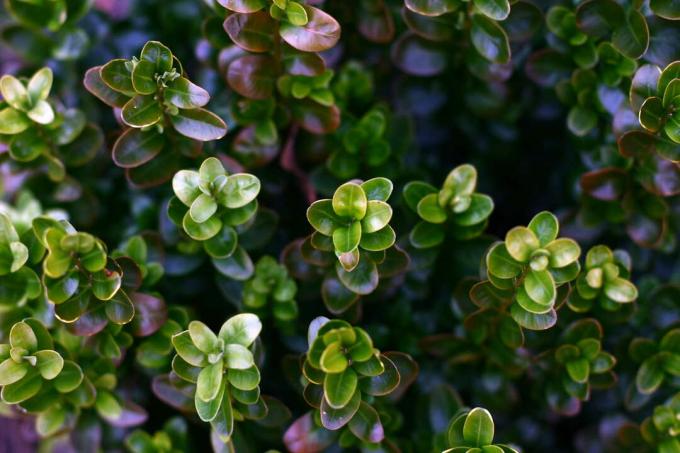
Causes and symptoms of boxwood shoot dieback
The disease is not only known as boxwood leaf fall, it is also called boxwood fungus or boxwood dieback. Boxwood dieback is caused by the fungus Cylindrocladium buxicola has caused and has brought gardeners in Germany to the brink of despair for almost 15 years now. This pathogen is able to attack completely healthy box bushes and consequently cause damage. The optimal conditions for an infestation are temperatures around 25 ° C and five to seven hours of leaf wetness. It usually takes place in July or August and the first symptoms appear after about two weeks, but the damage usually only becomes apparent in autumn. The fungus can survive in the ground or on fallen leaves and re-infect from the ground for up to eight years.
But what exactly do the symptoms of boxwood shoot death look like? First, brownish-orange spots appear on the leaves, which are getting bigger and bigger. The edges of the spots are usually darker in color, and often half of the leaf surface is also browned. Black stripes are then visible on the boxwood shoots. The leaves are then shed, but luckily the shoots stay green and can sprout again. On the underside of the leaf you can often see a white lawn of spurs in damp weather. Young leaves are particularly often affected, while older leaves are rarely infected. If the box is attacked more often or if it is additionally weakened by frost, the shoots can die off. You can also see dark longitudinal stripes on the shoots, which can be 0.3 to 1 mm wide.
Combat boxwood dieback
Unfortunately, there is no complete protection against box tree leaf fall, because even the healthiest plants can be attacked in a damp environment. But if you pay special attention to hygiene and have a resilient strain in your garden, you can significantly minimize the risk of infection. A particularly susceptible variety is 'Suffruticosa', this type of box suffers from an infection. The variety 'Herrenhausen', on the other hand, shows more resilience, as it will have fewer problems with leaf fall on dry locations. If you want more information about the Boxwood shoots are dying and have wanted to read about how to combat it, you can read through our special article.
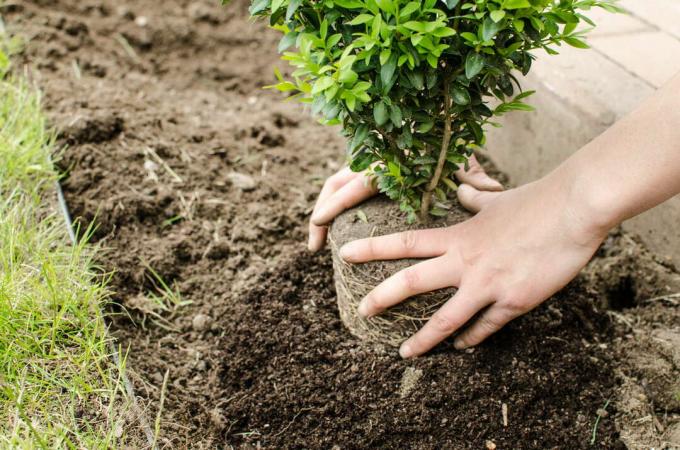
Boxwood crab
The boxwood crab, that too Volutella- The death of shoots or boxwood branches can sometimes be quite massive. The first thing you notice with this disease is growths on the boxwood, which is where the name of this disease comes from.
Causes and Symptoms of Boxwood Cancer
The cause of this disease is the fungus Volutella buxithat can wreak havoc on your boxwood. This fungus can only penetrate the box through wounds, it then decomposes the bark and the wood of the box tree.
The boxwood shrimp can first be recognized by the small growths at the entry points of the fungus, where the bark eventually peels off. In addition, the shoots begin to wither and dry up over the infection sites. In most cases only individual shoots are affected and not the entire shrub. The wood around the infected area then turns greyish-brown to black and the leaves on these dead shoots turn light brown and hang on them for a long time in the dried up state, until they finally fall off.
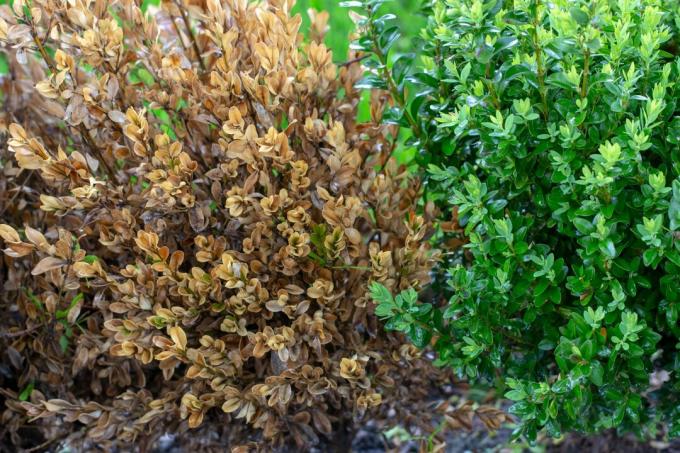
When the weather is rather damp, a white, mushroom-like coating even forms on the leaves and also on the shoots. This coating turns salmon pink when the fruiting bodies of the fungus develop. Sometimes red globules appear on the branches and leaves, which are the main fruit of the fungus.
Fight boxwood cancer
Unfortunately, there are no differences in the susceptibility of boxwood varieties to the Boxwood cancer, but you can simply prune back infested boxwood and the diseased ones Remove parts. Since boxwood cancer is transmitted through wounds and injuries, it is also important to To keep the equipment clean, it is best to disinfect the equipment with 70 percent Alcohol.
Boxwood rust
Not only the grain in the field can be affected by rust fungus (Pucciniales), but our beloved book is also threatened by them. Older box trees in particular can be plagued by box rust more often than young specimens.
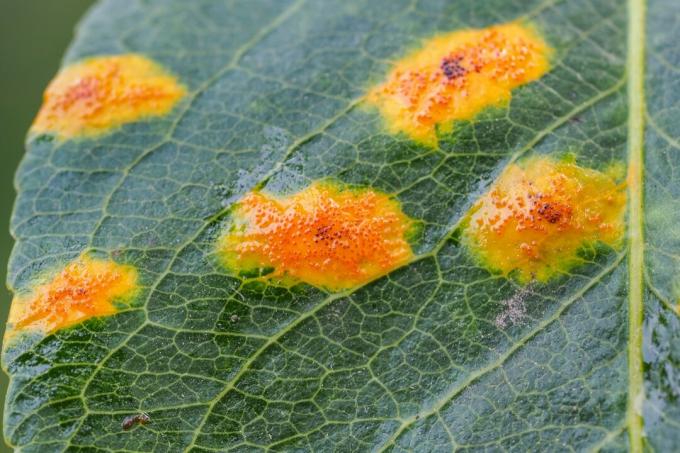
Causes and symptoms of boxwood rust
Boxwood rust is rare, but sometimes you can experience the symptoms of Puccinia buxi found on the leaves in spring. Rust fungi occur on many different plants and are usually yellowish to reddish in color, but the small spots that the boxwood rust forms are more brownish. These pustules are slightly arched, only about 2 mm in size, and form on the top and bottom of the box tree leaves.
Fight boxwood rust
To combat boxwood rust, it is sufficient to remove the infected shoots by pruning.
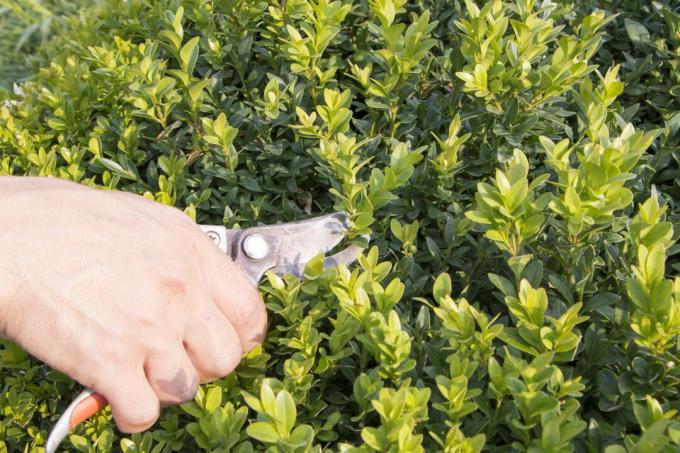
Phytophthora rot on the box
The boxwood is also threatened and weakened by wilt fungi, and that includes them Phytophthora- rot, too Phytophthora-Called withel. Especially wet soils promote the occurrence of this root disease.
Causes and symptoms of Phytophthora rot
For some time now one has heard again and again from reports from America, but also from the Netherlands, that the book of the egg mushroom Phytophthora cinnamomoni or Phytophthora nicotinae is infested and damaged. Phytophthora Although it is more known as a disease in potatoes or other vegetables, our evergreen shrubs can also suffer from the egg fungus.
These egg fungi prefer wet soil and attack the roots. Signs of it are wilting, yellowing of the leaves and weakened growth. Ultimately, large parts of the box tree die off or even the whole box tree itself. The box often looks like it has dried up or frozen, but the cause is “only” the egg fungus Phytophthora.
One can confuse the symptoms with those of the boxwood shrimp, but with the latter the wood of the book turns black or brown, which is the case with the Phytophthora- rot is not the case.
Fight phytophthora rot
Unfortunately, there is not much that can be done against this pathogen other than taking preventive measures. In any case, avoid waterlogging through drainage and if you find infested plants, you should remove them from your garden immediately or destroy them.
Important mushrooms on the boxwood briefly summarized:
- Box tree shoots die out (Cylindrocladium buxicola)
- Boxwood crab (Volutella buxi)
- Boxwood rust (Puccinia buxi)
- Phytophthora- rot
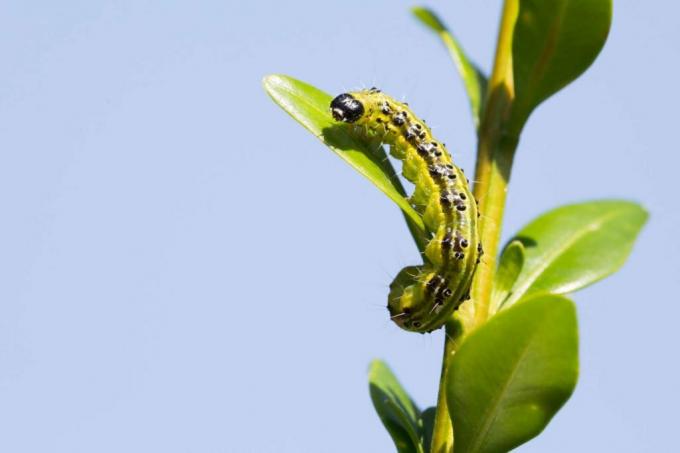
In addition to the diseases mentioned above, the boxwood can unfortunately also be attacked by various pests. You can find out which ones in our special article Boxwood pests occur particularly often and how to combat them.
More details on the Box tree moth and its control find out here.
